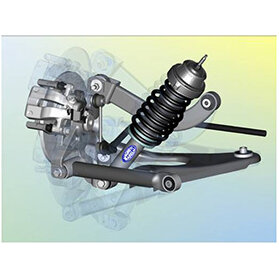Parasolid – new software version from Siemens
Parasolid v28.0 helps application developers deliver sophisticated, robust and easy to use design techniques to end-users.
Parasolid v28.0 delivers numerous enhancements to progressively increase your productivity and to take ownership of managing more geometric complexities that are best handled at the kernel modeler level. As an application developer, this enables you to deliver Parasolid’s sophisticated, robust and easy-to-use design techniques to your end-users which extends the accessible capabilities of their CAD, CAM and CAE systems. Major areas enhanced in Parasolid v28.0 include blending, general modeling and surface modeling.
Blending
Parasolid v28.0 blending improvements optimize results for improved surface quality in complex configurations to provide greater robustness in downstream operations. CAD developers can efficiently implement these blending design techniques in their applications, including:
- Improved smoothing methods for smoother joins and fewer sharp edges at joins between variable radius blends
- Improved blend patch quality when resolving self-intersecting blends on B-surfaces
- Improved diagnostic reporting of unrepaired self-intersecting face blends
- Improved surface quality when extending the parameter spine of disc blends
General Modeling
Parasolid v28.0 continues the delivery of general modeling (non-manifold modeling) capabilities to support complex CAE workflows. General Modeling enhancements include:
- Identifying and deleting blends in locally non-manifold bodies, which eliminates a series of separate operations
- New controls for the behavior of laminar edges in face editing and face replace operations
Surface Modeling
Parasolid v28.0 expands surfacing capabilities for creating geometry while handling more complexities to improve your productivity, including:
- Improved swept tool operation that allows a tool body to be swept along a path offset from the path provided that enables the use of existing geometry rather than requiring creation of a specific path
- Improved handling of degeneracies and parallel derivatives in swept tool operations to produce results with higher quality surfaces
- Improved constrained surface management to provide greater stability of results from small changes to input data
- Improved isocline and draft surface generation in tapering
www.plm.automation.siemens.com
source: Siemens
